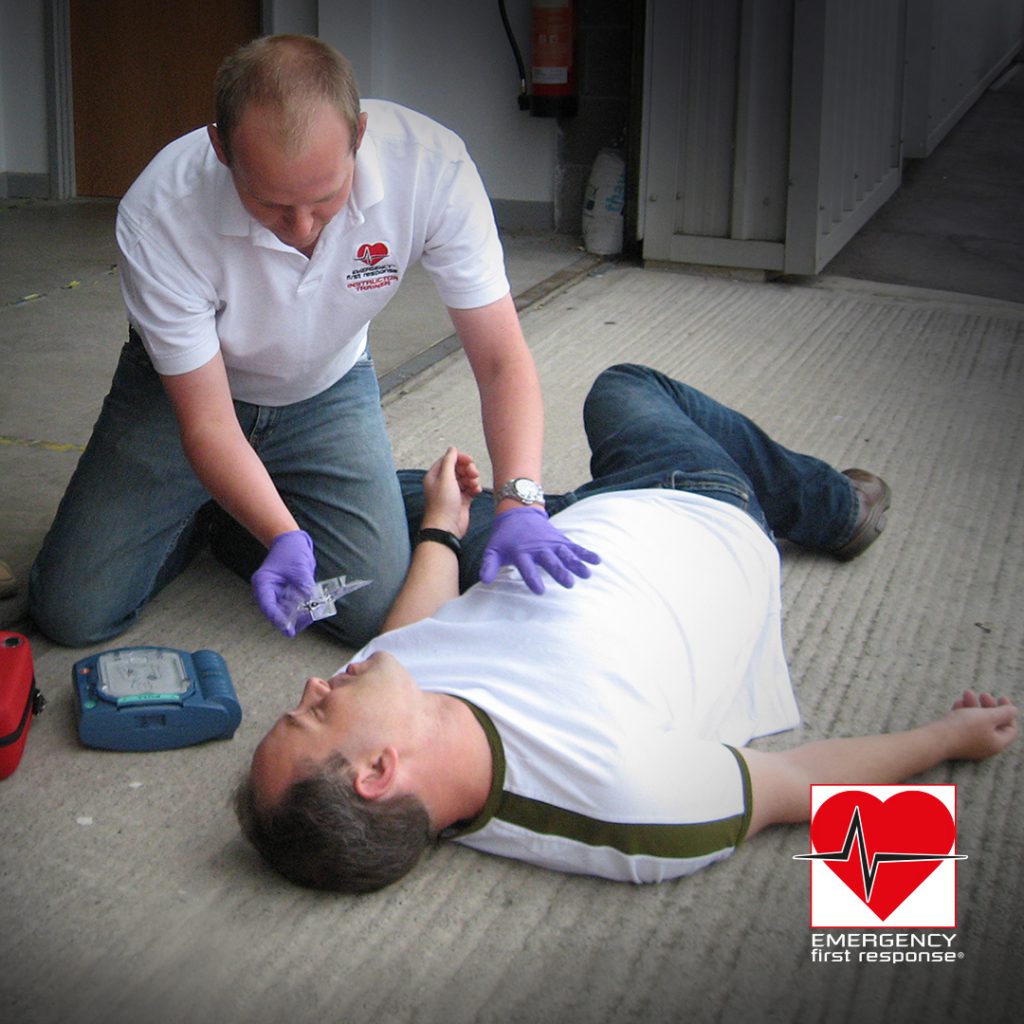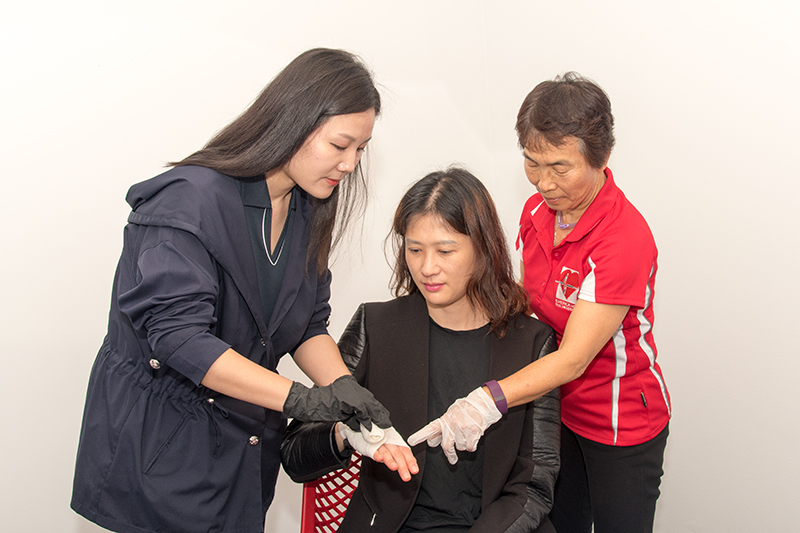When a medical emergency occurs, trained bystanders sometimes hesitate to act. Why? Because they’re in denial, or they’re afraid of doing something wrong. In today’s post, we’ll examine some of the reasons people don’t take action, and why imperfect care is better than no help at all.
In an emergency situation, hesitation is normal. The brain goes through three phases before deciding how to respond. These phases include:
Phase #1 Denial – This can’t be happening.
During this phase, you may be waiting for a loved one to stand up and say they’re okay, or for someone else to rush in and provide aid.
Phase #2 Deliberation – What should I do?
After accepting the situation, you consider the options: wait for someone else to step in, or take action.
Phase #3 Decision – Act on your plan
During Emergency First Response® (EFR) training, we teach people what steps to take in an emergency and acronyms to help them remember what to do next. In most situations, the first step is to contact professional emergency services, and the next step is to provide the best care you can.
Imperfect Care is Better than No Help At All
Doing something is always better than doing nothing. In a medical emergency, it is unlikely your actions will make the situation worse. Consider a scenario where someone you care about has a serious wound:
– An average adult can bleed to death in only five minutes.
– It can take 7–14 minutes for an ambulance to arrive (depending on the country and location urban vs. rural).
– Providing proper treatment within three minutes can significantly increase a patient’s odds of survival.
Below are some of the fears and misconceptions that prevent people from using their first aid or CPR skills to save a life. Review them, so in the moment you can acknowledge and move past them – and do what needs to be done.
I don’t want to hurt this person
If you see someone choking, bleeding, experiencing a cardiac event, or other medical emergency, there’s little you can do to make their situation worse. Imagine you are the patient, would you rather be alive with a bone injury from CPR, or left alone to die?
I’m afraid of a lawsuit
Most countries have Good Samaritan laws (a quick online search can verify). These laws protect bystanders who administer CPR and other lifesaving skills. If you provide care that’s within your level of training and are not compensated for your actions, it is unlikely you will be sued. Learn more about Good Samaritan laws.
I don’t want to touch someone inappropriately
A study from the University of Pennsylvania found: men were 23 percent more likely to survive cardiac arrest than women. The study revealed some rescuers were afraid to give women chest compressions due to fears of inappropriate touching. As a result, females received bystander CPR only 39 percent of the time, compared to 45 percent of the time for males.
If someone experiences cardiac arrest outside of a hospital, bystander CPR can double or even triple the patient’s chance of survival. If someone experiencing a cardiac event is conscious, you can always ask for permission. If the patient is not able to give consent because they are unconscious, do your best to overcome your fears and use your skills to save someone’s mom, sister, or daughter.
I’m worried about disease transmission
Giving mouth-to-mouth rescue breaths prevents many people from even learning CPR in the first place. EFR course participants learn to give breaths using protective barriers which can prevent disease transmission. In the event you don’t have a barrier, or just aren’t comfortable giving rescue breaths, that’s okay. Studies have found bystander administered CPR with chest compressions only can be as effective as traditional CPR with rescue breaths.
You’re a Responder, Not a Bystander
There may come a time when you’re the only person who can help save someone’s life, and your brain will deny, deliberate, and (hopefully) decide to act. When moments matter, and experienced medical professionals are several minutes away, Emergency First Response training can give you the skills and the confidence to provide emergency care.
Our experienced instructors and hands-on training allow you to practice lifesaving skills until you’re comfortable doing them correctly on your own. Students also participate in role-playing scenarios where they rehearse walking into an emergency situation, assessing the scene, and taking action.
Sign up for Emergency First Response CPR training or a first aid course today. We also offer convenient CPR and first aid refresher training; regain your confidence to provide emergency care – even if you didn’t do your original CPR or First Aid Training with EFR.




